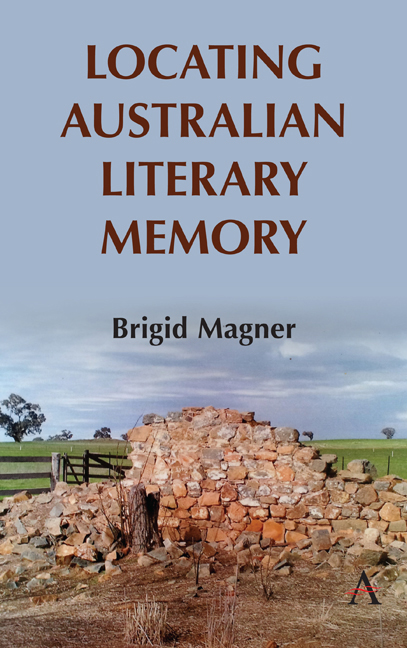Book contents
- Frontmatter
- Contents
- List of Illustrations
- Acknowledgements
- Introduction: Remembering Absent Authors
- Chapter One Adam Lindsay Gordon's Grave
- Chapter Two Joseph Furphy in the Riverina
- Chapter Three Henry Handel Richardson and the Haunting of Lake View
- Chapter Four Henry Lawson Country
- Chapter Five The Multiple Birthplaces of A. B. ‘Banjo’ Paterson
- Chapter Six Nan Chauncy's Sanctuary
- Chapter Seven Living Memorials: The Houses of Katharine Susannah Prichard and Eleanor Dark
- Chapter Eight Statue Mania: P. L. Travers and the Appeal of Mary Poppins
- Chapter Nine Kylie Tennant's Hut
- Chapter Ten The David Unaipon Monument at Raukkan
- Conclusion: Towards an Expanded Repertoire of Literary Commemorations
- Notes
- Index
Chapter Five - The Multiple Birthplaces of A. B. ‘Banjo’ Paterson
Published online by Cambridge University Press: 10 December 2019
- Frontmatter
- Contents
- List of Illustrations
- Acknowledgements
- Introduction: Remembering Absent Authors
- Chapter One Adam Lindsay Gordon's Grave
- Chapter Two Joseph Furphy in the Riverina
- Chapter Three Henry Handel Richardson and the Haunting of Lake View
- Chapter Four Henry Lawson Country
- Chapter Five The Multiple Birthplaces of A. B. ‘Banjo’ Paterson
- Chapter Six Nan Chauncy's Sanctuary
- Chapter Seven Living Memorials: The Houses of Katharine Susannah Prichard and Eleanor Dark
- Chapter Eight Statue Mania: P. L. Travers and the Appeal of Mary Poppins
- Chapter Nine Kylie Tennant's Hut
- Chapter Ten The David Unaipon Monument at Raukkan
- Conclusion: Towards an Expanded Repertoire of Literary Commemorations
- Notes
- Index
Summary
The resonance of the birthplace is demonstrated by the debate over the location of A. B. ‘Banjo’ Paterson's birth in the New South Wales town of Orange. Emmaville Cottage, as it is now known, is one of a number of key sites around Australia with connections to one of the nation's best-known poets. Yeoval, Illalong and Yass, Gladesville, Corryong and Winton are also closely aligned with the peripatetic Paterson's biography, yet the birthplace stands out due to the debates about authenticity it has ignited.
Clement Semmler describes Paterson as ‘the poet of the western plains […] the Australian Plainsman of our literature’.
Geographically this area might be regarded as the great hinterland lying between the upper reaches of the Lachlan and the Eumerella; alternatively we might think of it, as Paterson probably did, as the whole of the illimitable outback of the Australia he knew and loved from his own travels: western New South Wales, the Snowy country, the Queensland downs (where he wrote ‘Waltzing Matilda’) and the Northern Territory.
Paterson's country is vaguely located where the plains are ‘all awave with grass’ and ‘the skies are deepest blue’. Just as Lawson is associated with Gulgong, Grenfell, and Eurunderee and Furphy is aligned with the Riverina, Paterson country is the western plains; yet this is a generalised area according to Semmler, lacking specificity, which allows him to be associated with innumerable plains across the country.
Ken Stewart notes that Paterson's work is no longer in the cultural mainstream yet his influence remains indirectly strong and directly tangible. The Man from Snowy River (1895) set a record in Australian publishing, with Angus & Robertson ordering a second edition before they published first edition. The film The Man from Snowy River (1982) was one of the most commercially successful Australian productions, until it was trumped by Crocodile Dundee four years later. The Man from Snowy River has since appeared at the 2000 Olympics and at a travelling ‘Arena Spectacular’. The words of ‘Waltzing Matilda’ are as well known as, if not better known than, those of the official national anthem.
The Equestrian-Pastoral
In the preface to the 1913 edition of The Man from Snowy River and Other Verses, Rolf Boldrewood writes: ‘In my opinion this collection comprises the best bush ballads written since the death of Lindsay Gordon.’
- Type
- Chapter
- Information
- Locating Australian Literary Memory , pp. 91 - 112Publisher: Anthem PressPrint publication year: 2019



